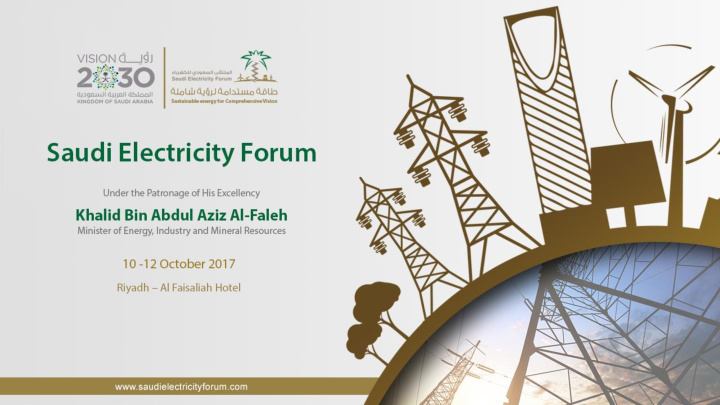



International experiences for Electricity Sector privatization Iain MacGill Fifth Session : Developments in Associate Professor, School of Electrical Engineering Privatization of the and Telecommunications Electricity Sector in Saudi Arabia Joint Director (Engineering), Centre for Energy and Saudi Electricity Forum Environmental Markets Riyadh, Saudi Arabia UNSW Sydney 10-12 October 2017 Australia
An agreed destination – however, all or none both possible given varied contexts, and choices (World Energy Council , 2017) 3
Privatization and the (traditional) electricity sector reform process • Obliging electricity enterprises to operate according to commercial principles • Restructuring of the electric power supply chain to enable the introduction of competition • Development of economic regulation of the power market that is applied transparently by an agency that operates autonomously • Privatization of the unbundled electricity generators and distributors under dispersed ownership • Development of competition in the generation and supply segments by development of power exchanges • Focusing government’s role on policy formation and execution (World Bank, 2006) 4
In practice, not an inevitable progression, privatization seen across all industry arrangements and both competitive and non-competitive (network) sectors (International Energy Agency, 2016) (International Energy (IEA, 2016) Agency, 2001) 5
Some early electricity reform experience suggesting possible stable intermediate industry structures (Victor and Heller, The political economy of power sector reform, 2007)
The Australian National Electricity Market, over two decades of restructuring and privatization (Australian Energy Market Commission, 2009) (Australian Energy Regulator, 2017) (Finkel Review, 2017) 7
Competitive Generation and Retail ownership • Predominant private ownership of both generation and retail • A mix of local and international firms, and foreign government vehicles • A mix of State and Federal Government participation (Australian Energy Regulator, 2017)
Regulated Network ownership • Predominantly private ownership • Both outright sales and 99 year leases • Also one mixed govt/private partnership (Australian Energy Regulator, 2017)
A two decade process with more to come… • Recently, Transgrid (2015) • NSW Transmission Network • 99 year lease for A$16b • Buyer consortia – Hastings Fund Management, Canadian Pension Fund, Abu Dhabi and Kuwait Investment Authorities, Spark Infrastructure • Price 1.6X Regulated Asset Base (Chester, 2015)
..and even more recently • Ausgrid • NSW Distribution Network serving Sydney region – Australia’s largest network business • 50.4% on 99 year lease for A$10.2b • Buyers IFM and Australian Super (Australian owned) • Price 1.4X regulated asset base • Essential Energy serving rural and regional NSW to be retained in full public ownership
Wholesale market performance • Prices an outcomes of many factors including generation mix, structure • Evidence of the exercise of market power at times in regions with both predominantly private and government owned generation (Australian Energy Regulator, 2017)
NEM network business performance • Comparisons made challenging by different service areas and previous investment cycles • Still, a marked increase in investment in some State owned networks vs privately owned • AER productivity estimates suggest better private Dx performance, less clear on Tx (Australian Energy Regulator, 2015) (Australian Energy Regulator, 2017)
Retail (small customer) prices • Very high retail price rises for a range of reasons including network expenditure • No clear evidence that regions with high levels of private retailer participation are performing better or worse for end-users than those with more government ownership (The Australia Institute, 2017)
Security challenges appear to be increasing • Text box (Australian Energy Regulator, 2017) (Grattan Institute, 2017)
The future – how distributed, hence invariably privatised? (Finkel Review, 2017) • Australia has the highest household PV penetration in the world • .. and pausible scenarios of distributed energy contributing up to 50% of total electricity generation 16
Recommend
More recommend